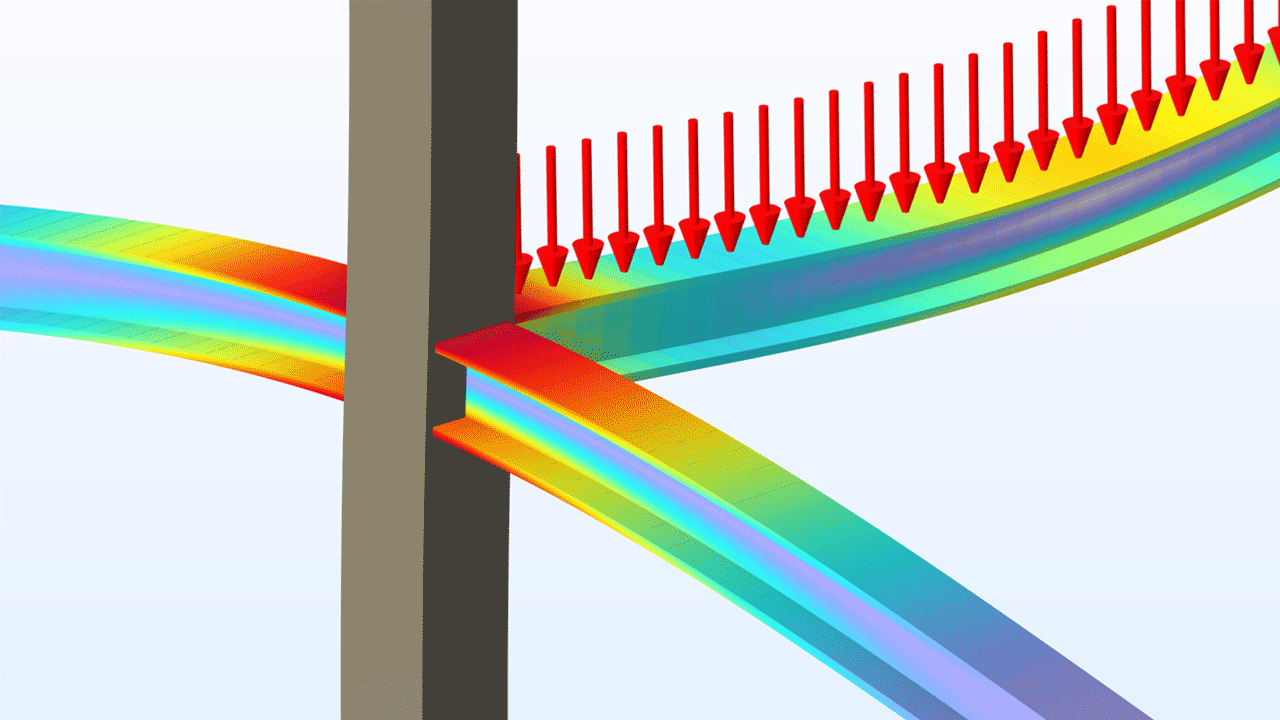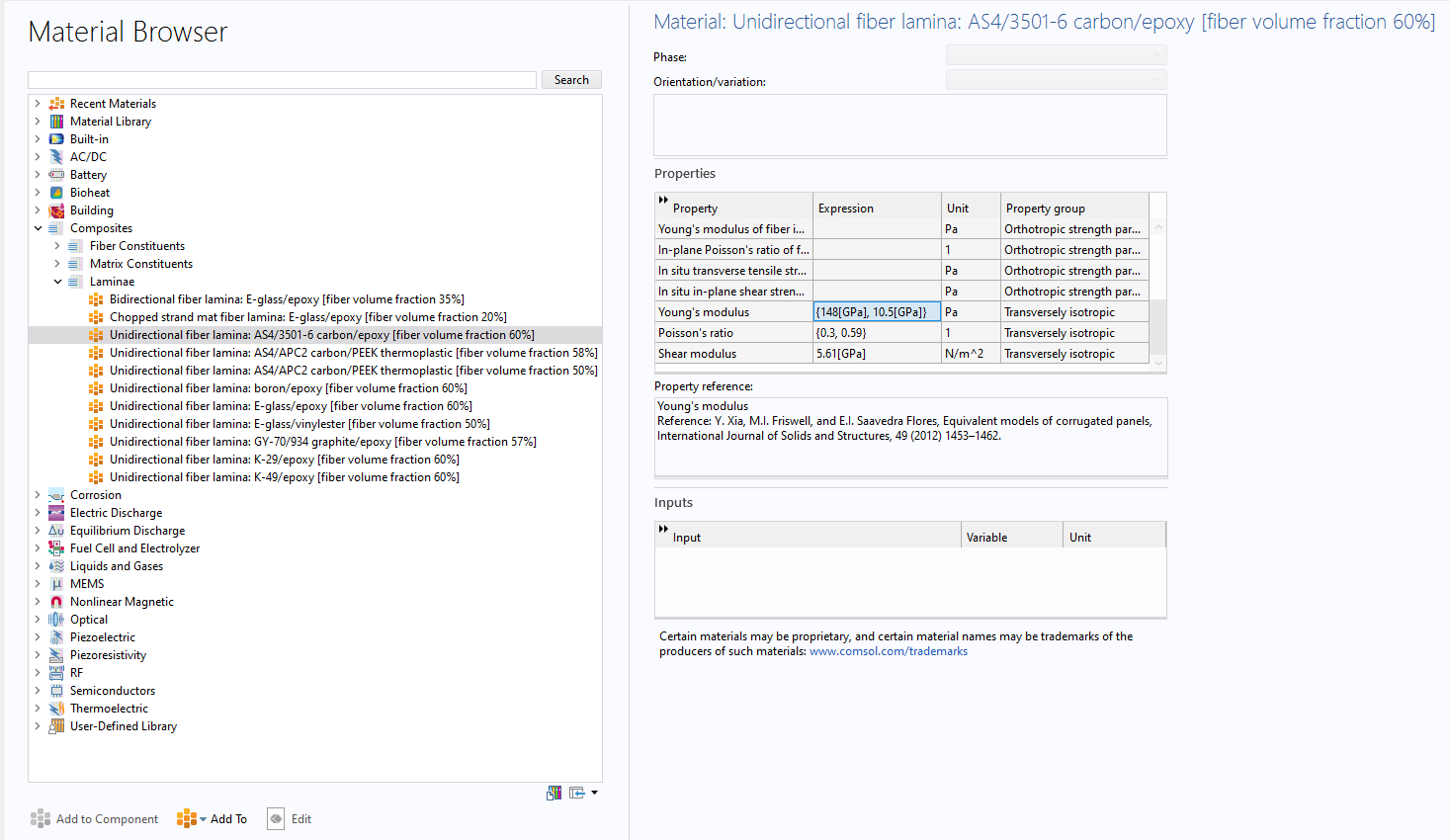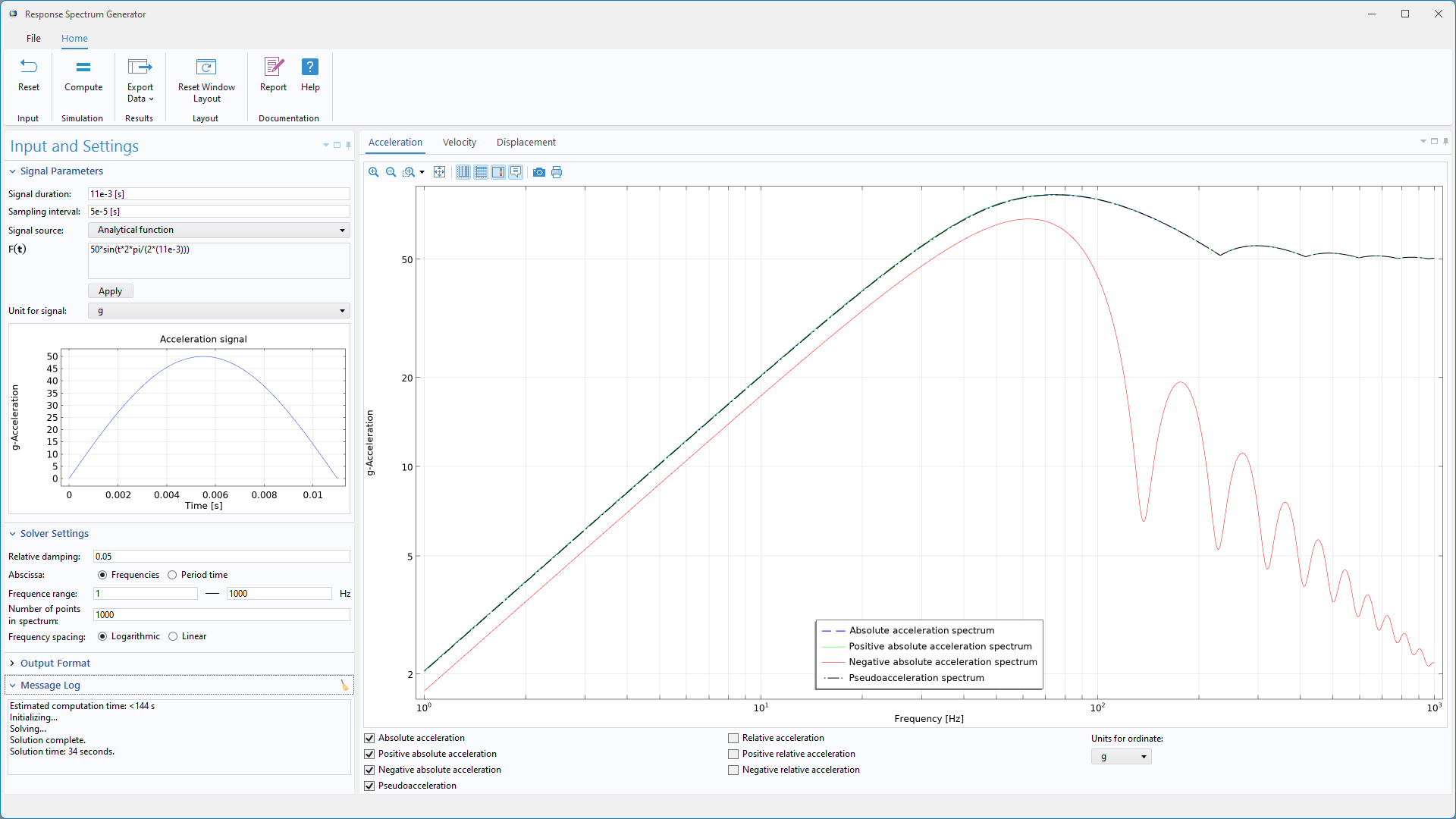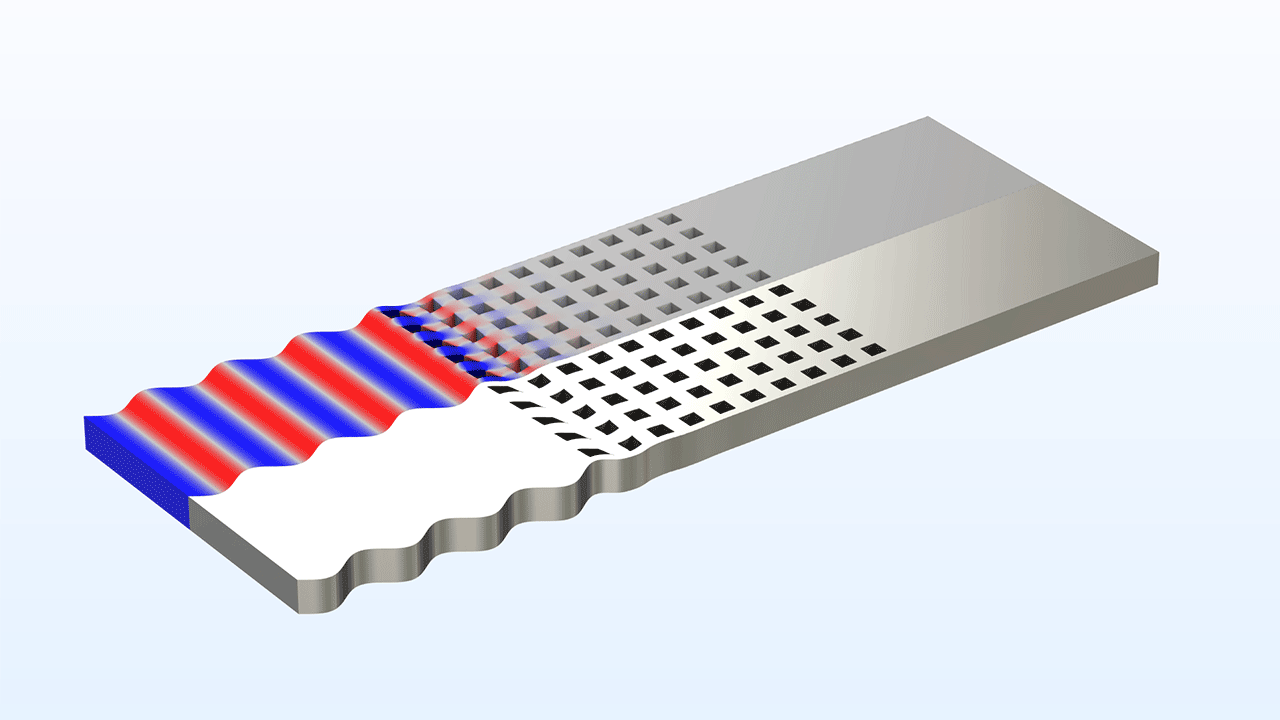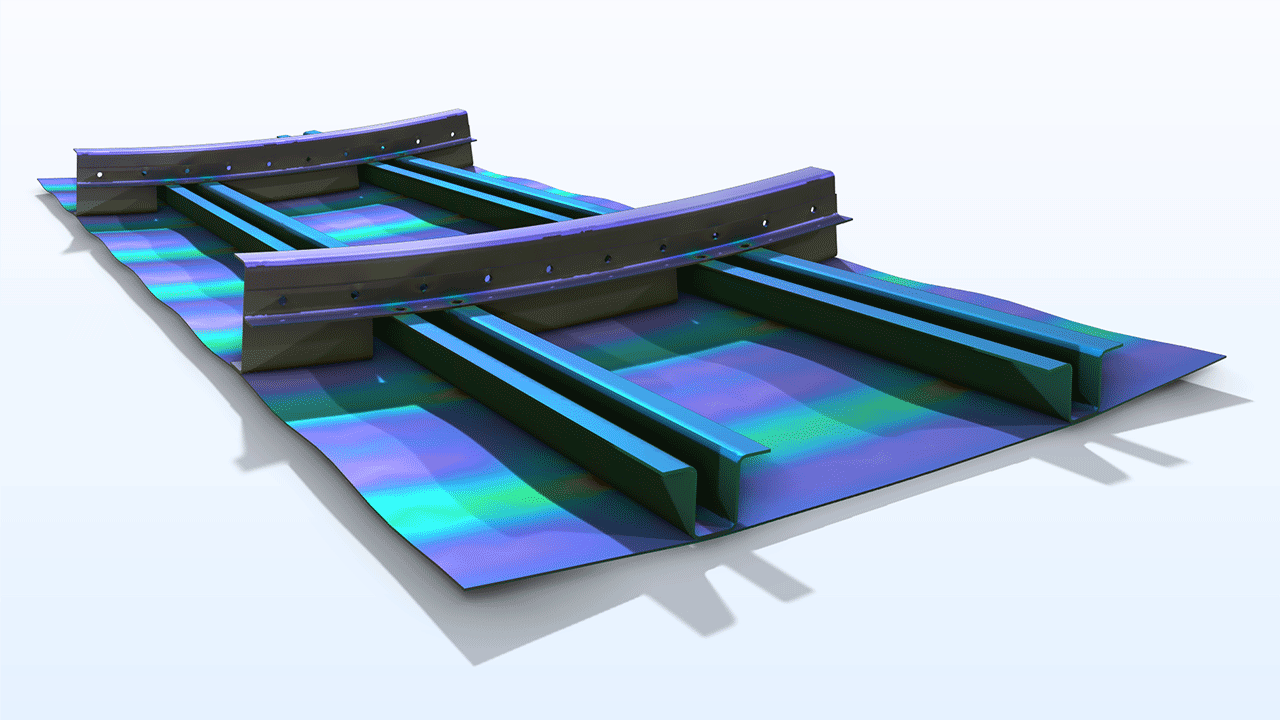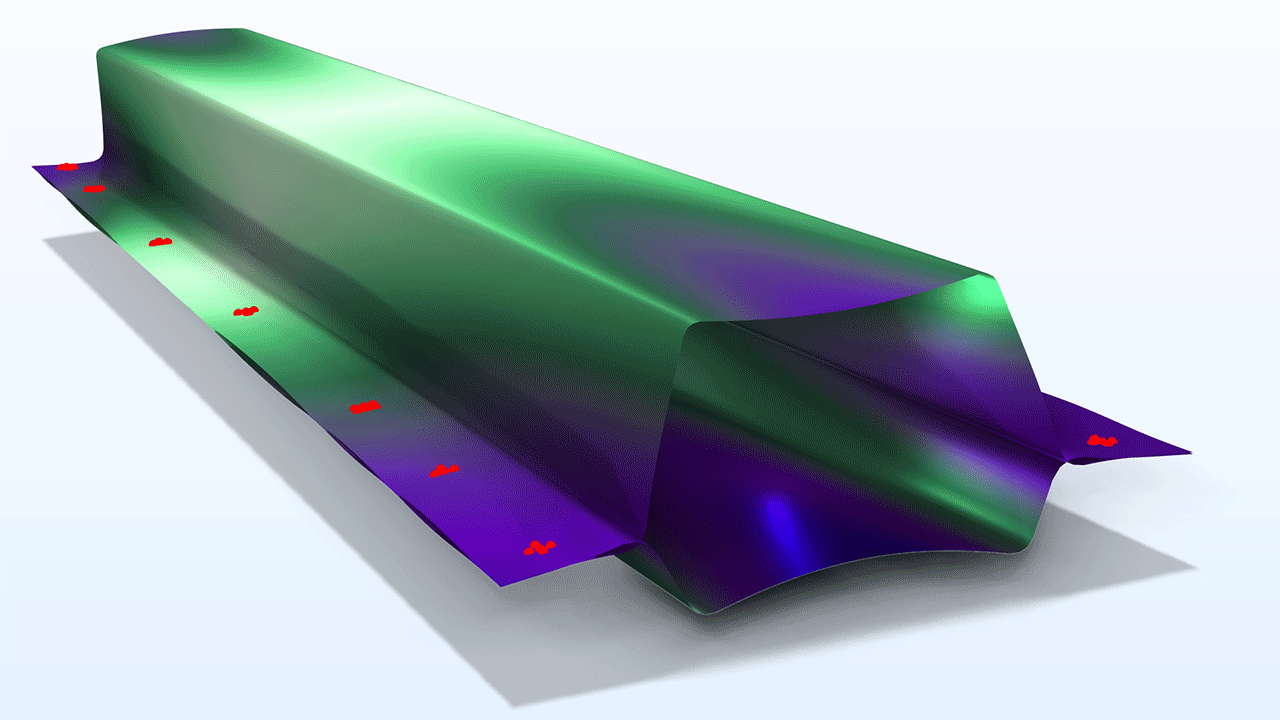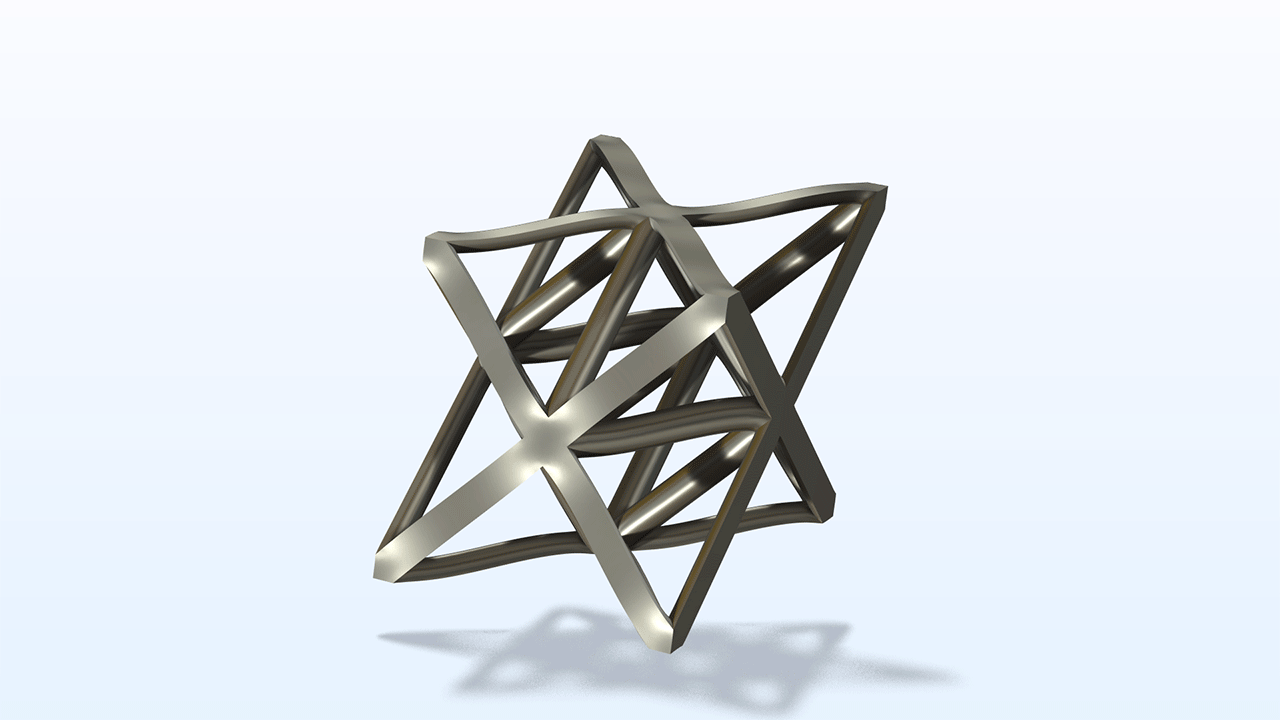Aggiornamenti Structural Mechanics Module
Nuove interfacce multifisiche di elettromeccanica
Le nuove interfacce Electromechanics, Shell ed Electromechanics, Membrane semplificano la modellazione della deformazione di strutture sottili, come le membrane microfoniche, influenzate da forze elettrostatiche. Queste interfacce includono automaticamente l'accoppiamento multifisico Electromechanics, Boundary per una perfetta integrazione con elementi shell o membrana e utilizzano l'interfaccia Electrostatics per modellare il campo elettrico. Dimostrate nei tutorial Brüel & Kjær 4134 Condenser Microphone e Axisymmetric Condenser Microphone, queste interfacce richiedono l'AC/DC Module o il MEMS Module oltre allo Structural Mechanics Module.
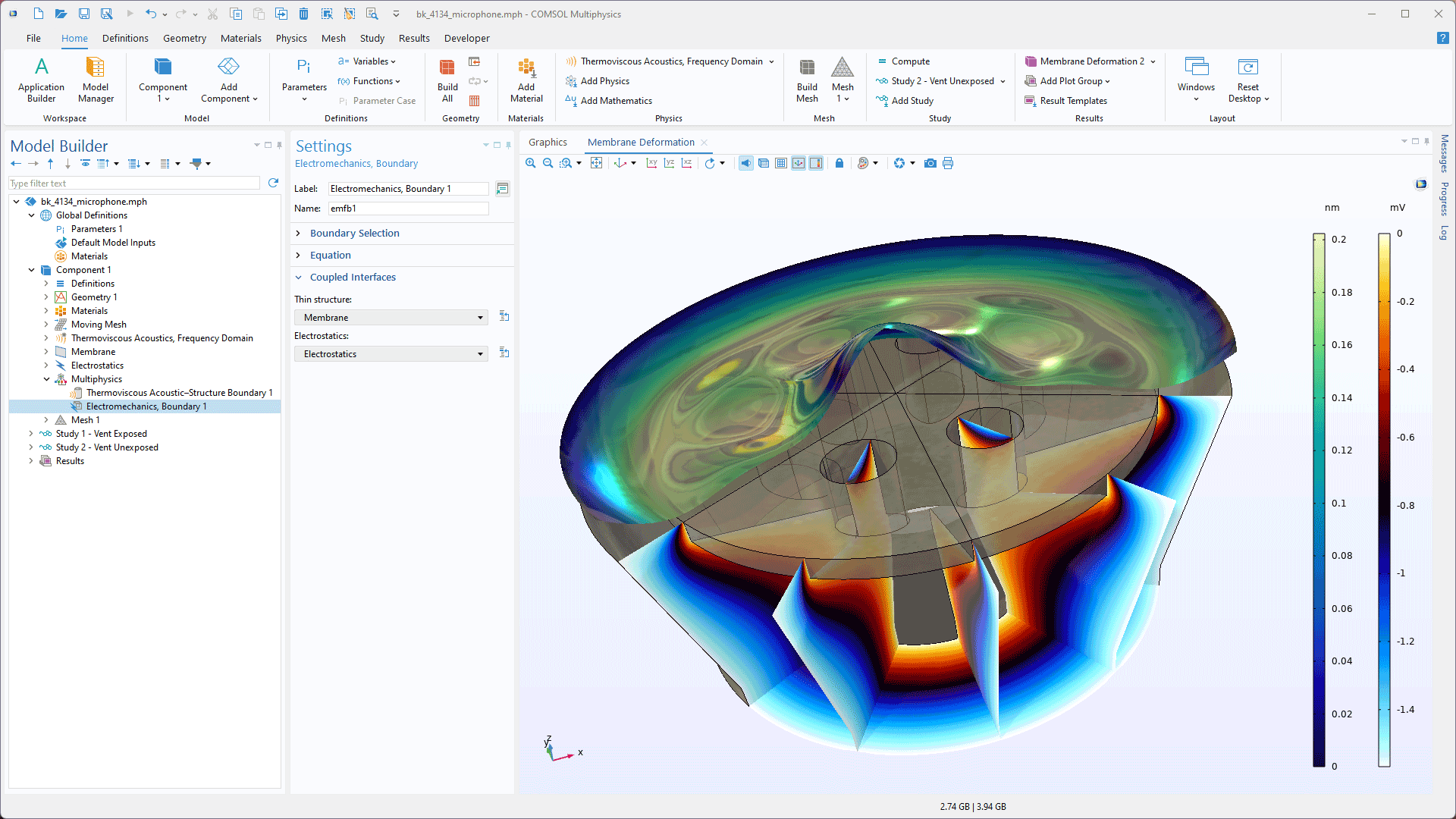
Accoppiamento multifisico Shrinkage e Swelling
Per modellare le variazioni di volume indotte dalla diffusione, è stato aggiunto un nuovo accoppiamento multifisico Shrinkage and Swelling che collega bidirezionalmente le interfacce Transport in Solids e Solid Mechanics. Questo nuovo accoppiamento può essere utilizzato per simulare gli effetti delle variazioni di concentrazione sul volume e studiare come le sollecitazioni possono influenzare la diffusione. Ciò è utile, ad esempio, nelle batterie, dove possono verificarsi variazioni di volume molto grandi a causa del trasporto degli ioni. Questa nuova funzione è visibile nei seguenti tutorial:
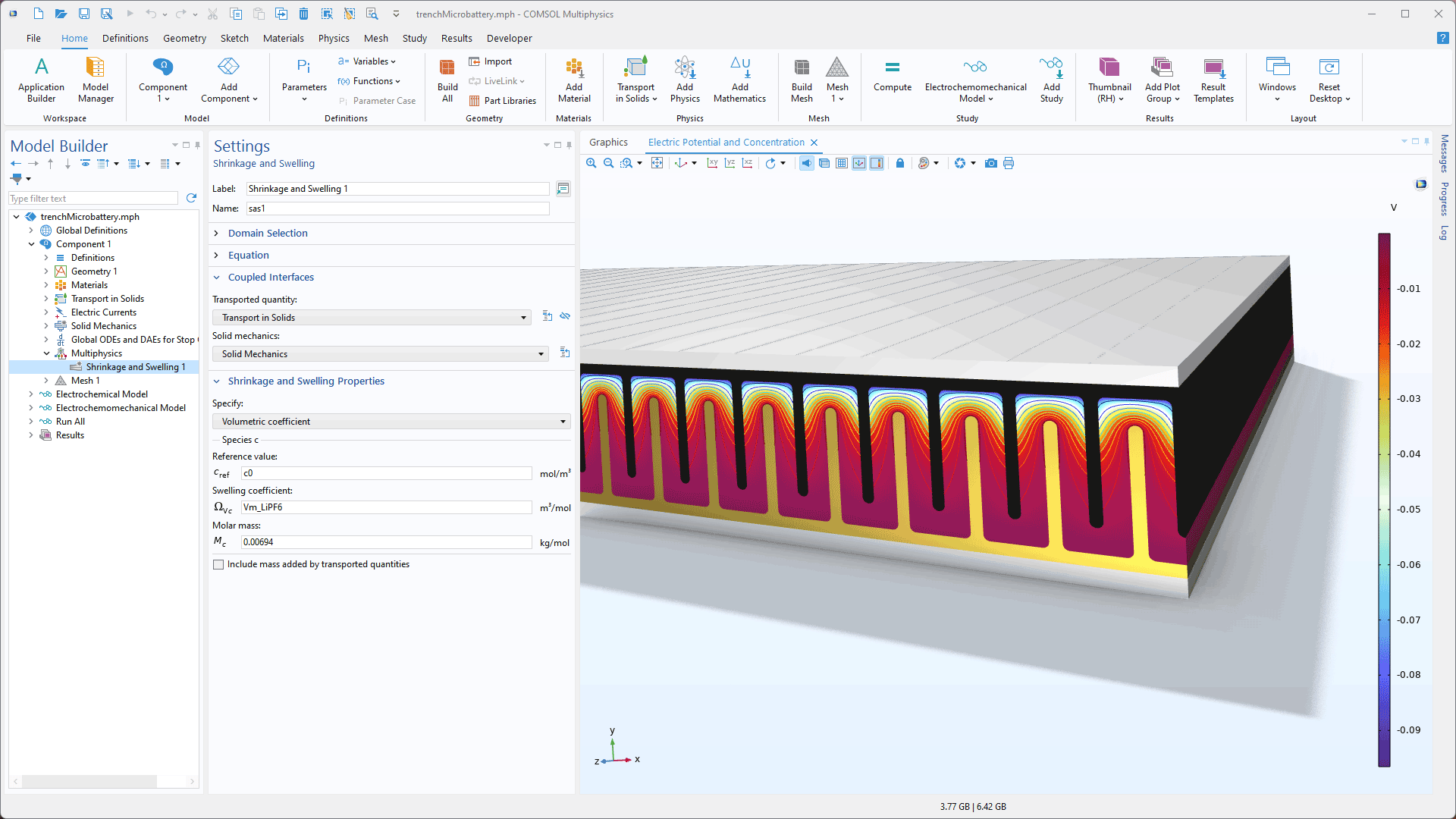
Modellazione semplificata dei dispositivi di fissaggio
Per le strutture collegate da un gran numero di elementi di fissaggio, come rivetti o bulloni, la modellazione manuale di ciascun elemento può richiedere molto tempo. Per ovviare a questo problema, è stata aggiunta una nuova funzione Fasteners all'interfaccia Shell. Questa funzione rileva automaticamente i fori circolari accoppiati sui contorni paralleli dello shell e li collega. La rigidità della connessione terrà conto di proprietà quali i dati del materiale, il diametro del dispositivo di fissaggio e lo spessore della piastra. È inoltre possibile calcolare i fattori di sicurezza per gli elementi di fissaggio in base a espressioni definite dall'utente. Il nuovo tutorial Postbuckling Analysis of an Aircraft Fuselage illustra questa funzione.
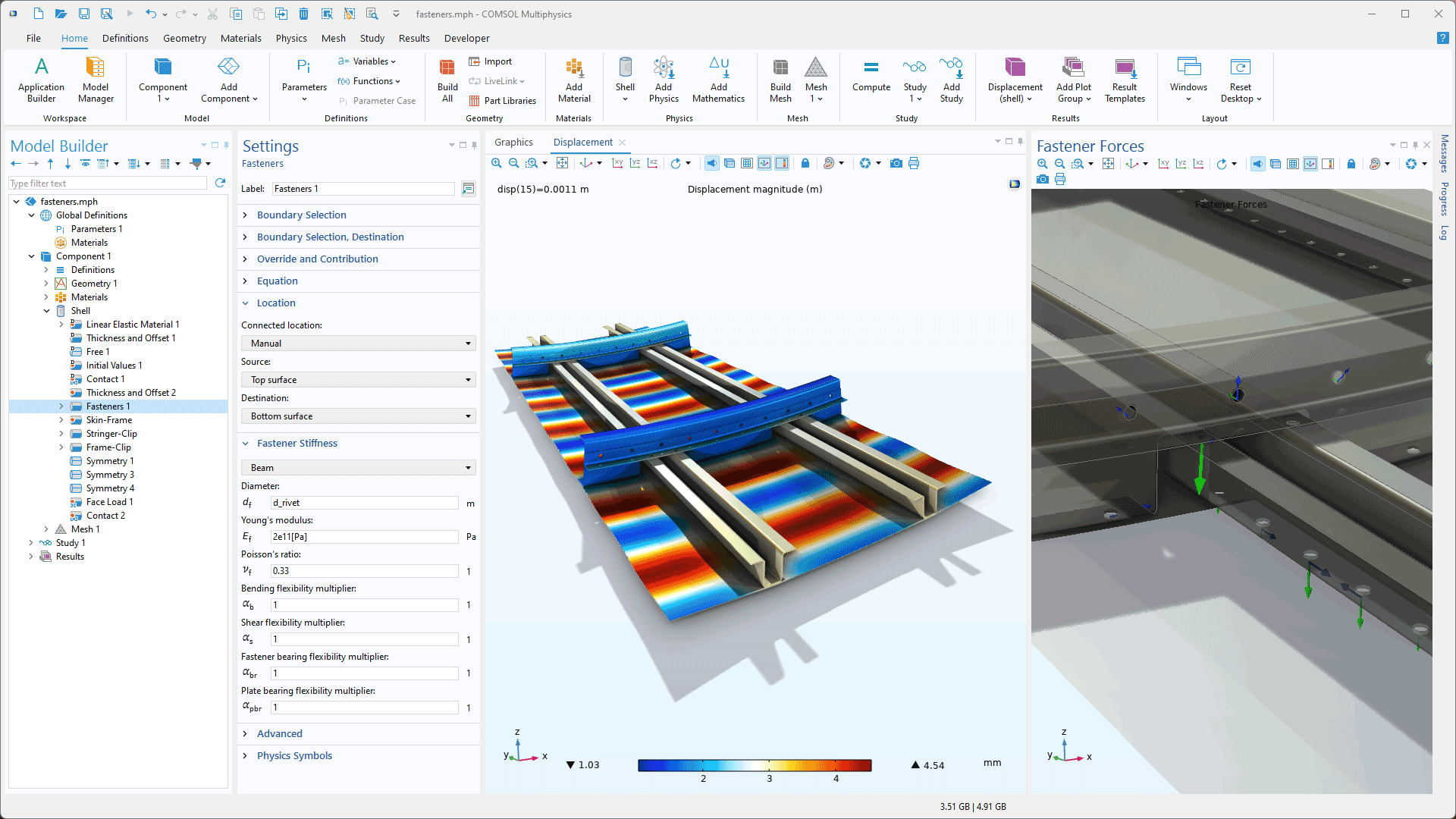
Saldature a punti
Per l'interfaccia Shell è stata aggiunta una nuova funzione Spot Welds che facilita la modellazione di strutture collegate da un gran numero di punti di saldatura. Le posizioni di tali punti di saldatura sono fornite sotto forma di un elenco che può essere importato da un file di testo. L'implementazione è indipendente dalla mesh sui contorni dello shell collegato e include una rigidità controllata dall'utente. Le forze e i momenti trasferiti da ciascun punto di saldatura possono essere valutati anche in forma grafica e tabellare. Il nuovo tutorial Spot-Weld Connection in a Double Hat Beam illustra questa nuova funzione.
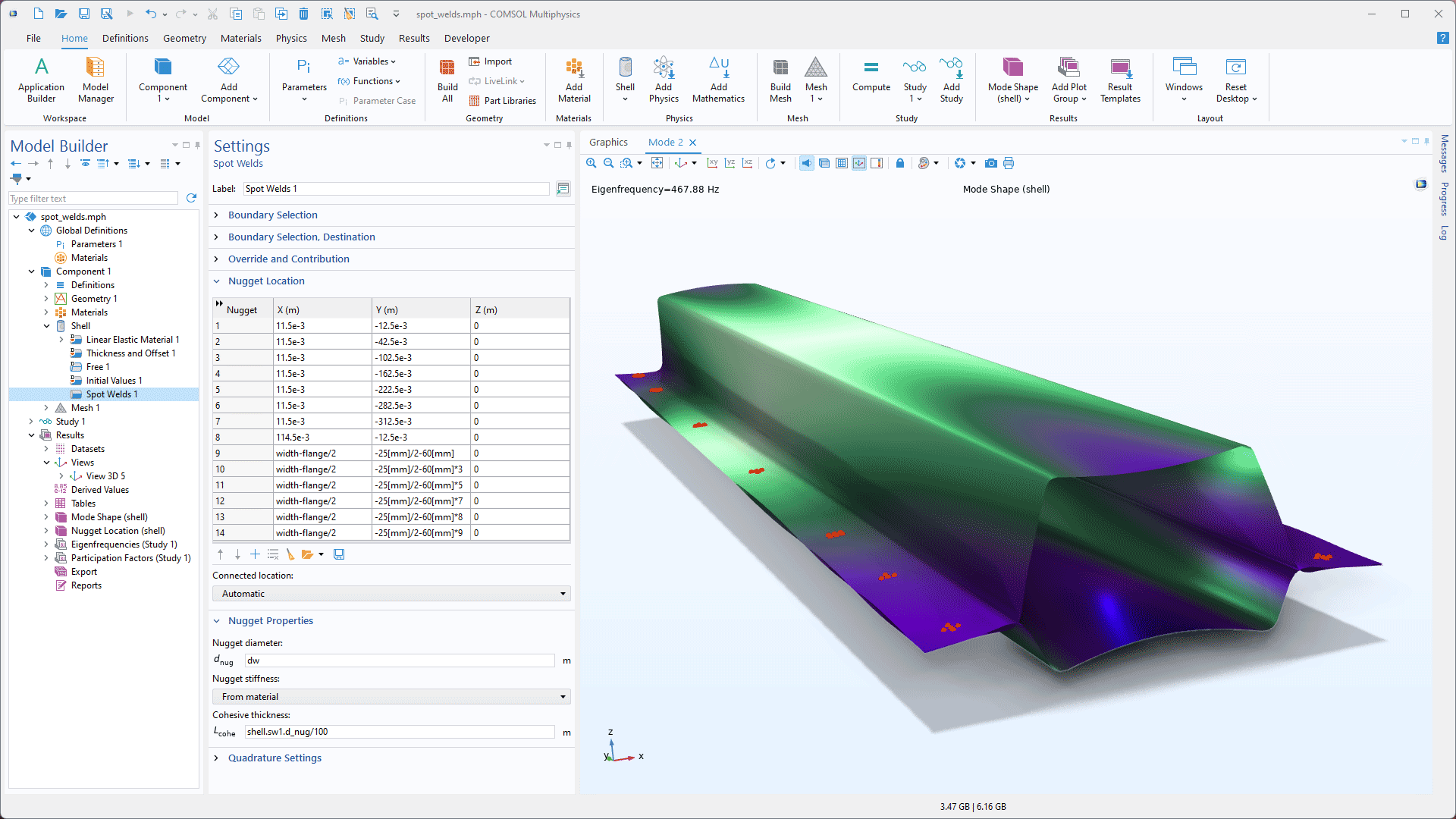
Formulazione del contatto per i contorni interni
All'interfaccia Solid Mechanics è stata aggiunta una nuova funzione Interior Contact che consente di includere condizioni di contatto come attrito, adesione e decoesione ai contorni interni. Con questa formulazione, le coppie di contatto e gli assiemi non sono necessari e l'analisi può essere geometricamente lineare. Questa caratteristica può essere utilizzata per la modellazione di applicazioni quali giunti bullonati e contorni separati dalla decoesione. I tutorial Mixed-Mode Debonding of a Laminated Composite e Vibration of a Squeezed Plate sono stati aggiornati per mostrare questa nuova funzione.
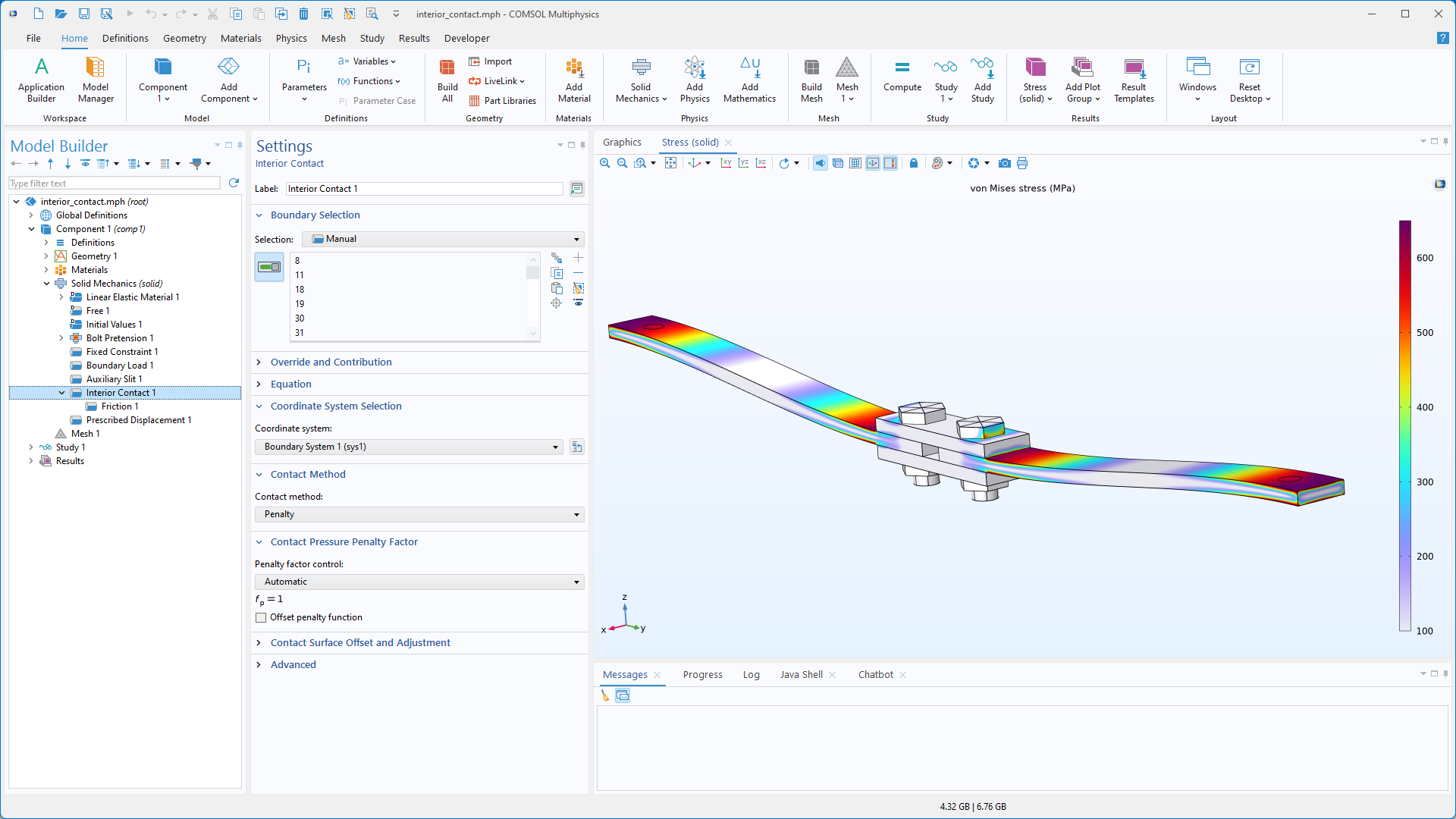
Adattamento dei dati viscoelastici
Le proprietà dei materiali viscoelastici sono spesso misurate nel dominio della frequenza e sono tipicamente disponibili come moduli di storage e di loss dipendenti dalla frequenza o approssimati mediante modelli a derivate frazionarie. In questa versione, alla funzione Viscoelasticity è stata aggiunta una nuova funzionalità che mappa tali dati in funzioni del dominio del tempo utilizzando un adattamento a frazione parziale. Ciò consente agli utenti di eseguire simulazioni dipendenti dal tempo di materiali viscoelastici, indipendentemente dalla forma originale delle proprietà del materiale. Questa nuova aggiunta è visibile nel tutorial Eigenmodes of a Viscoelastic Structural Damper.
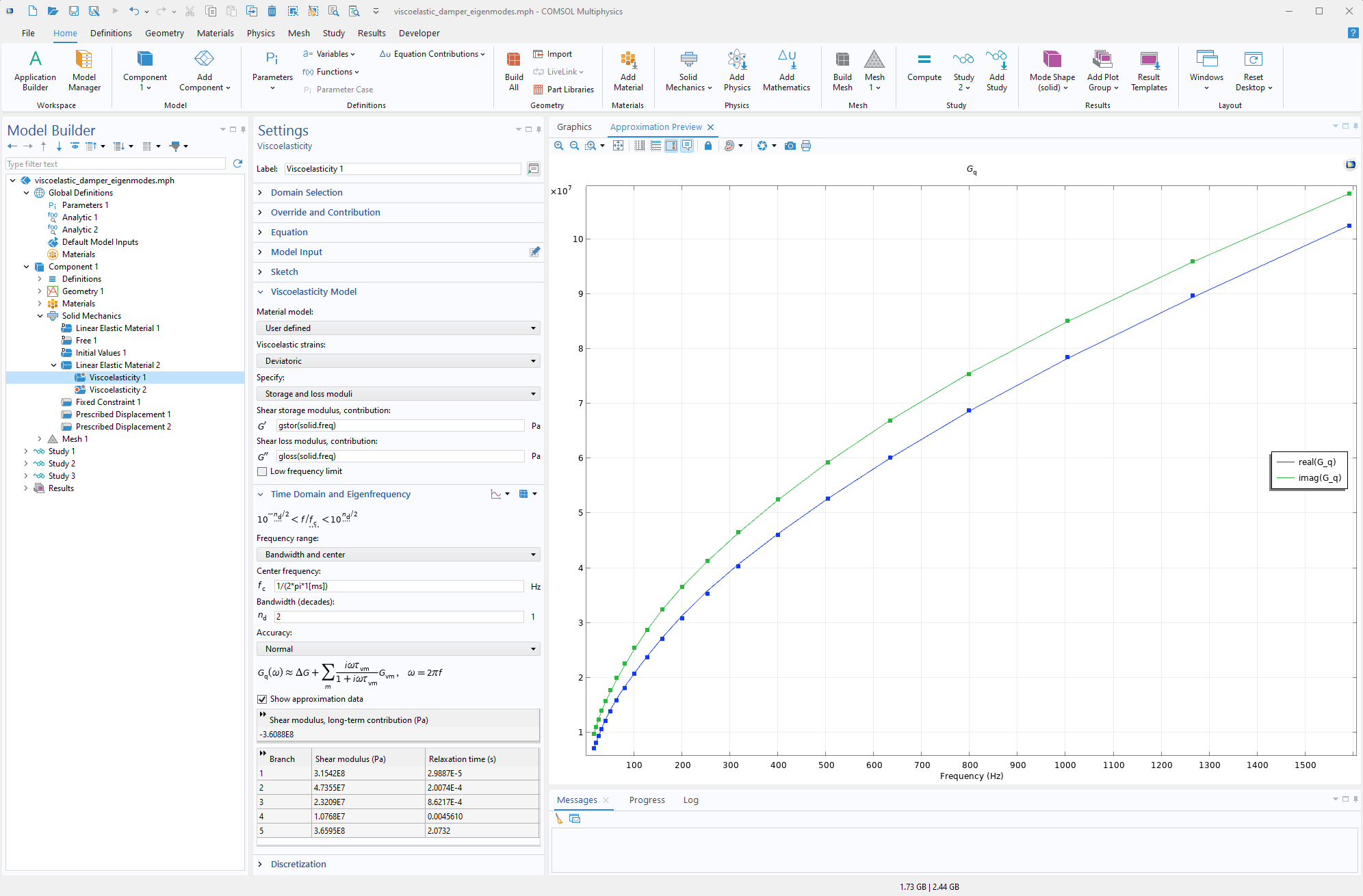
Visualizzazione di beam e pipe in 3D
È ora possibile ottenere una visualizzazione 3D completa per gli elementi beam e pipe utilizzando i nuovi tipi di dataset Beam e Pipe. Questi set di dati possono essere utilizzati, ad esempio, per visualizzare la distribuzione delle sollecitazioni e le variabili sulla sezione trasversale. Sono supportati i tipi di sezione trasversale integrati Rectangle, Circular, Box, Pipe, H-profile, T-profile, U-profile, C-profile e Hat. I seguenti tutorial illustrano questa nuova funzionalità:
Stabilizzazione nell'interfaccia Membrane
La rigidità fuori piano delle membrane è controllata dalla tensione in piano. Di conseguenza, è comune che le membrane siano numericamente instabili in una configurazione iniziale priva di tensioni, prima dell'aggiunta di carichi esterni. Con la nuova funzione Stabilization dell'interfaccia Membrane, è possibile ottenere una stabilizzazione automatica durante le prime iterazioni, prima che la struttura abbia ottenuto la sua corretta rigidità fisica e numerica dal carico indotto. I seguenti tutorial dimostrano questa funzione:
- membrane_airbag_inflation
- membrane_airbag_inflation_hyperelastic
- membrane_torsion
- membrane_uniaxial_stretching
- vibrating_membrane
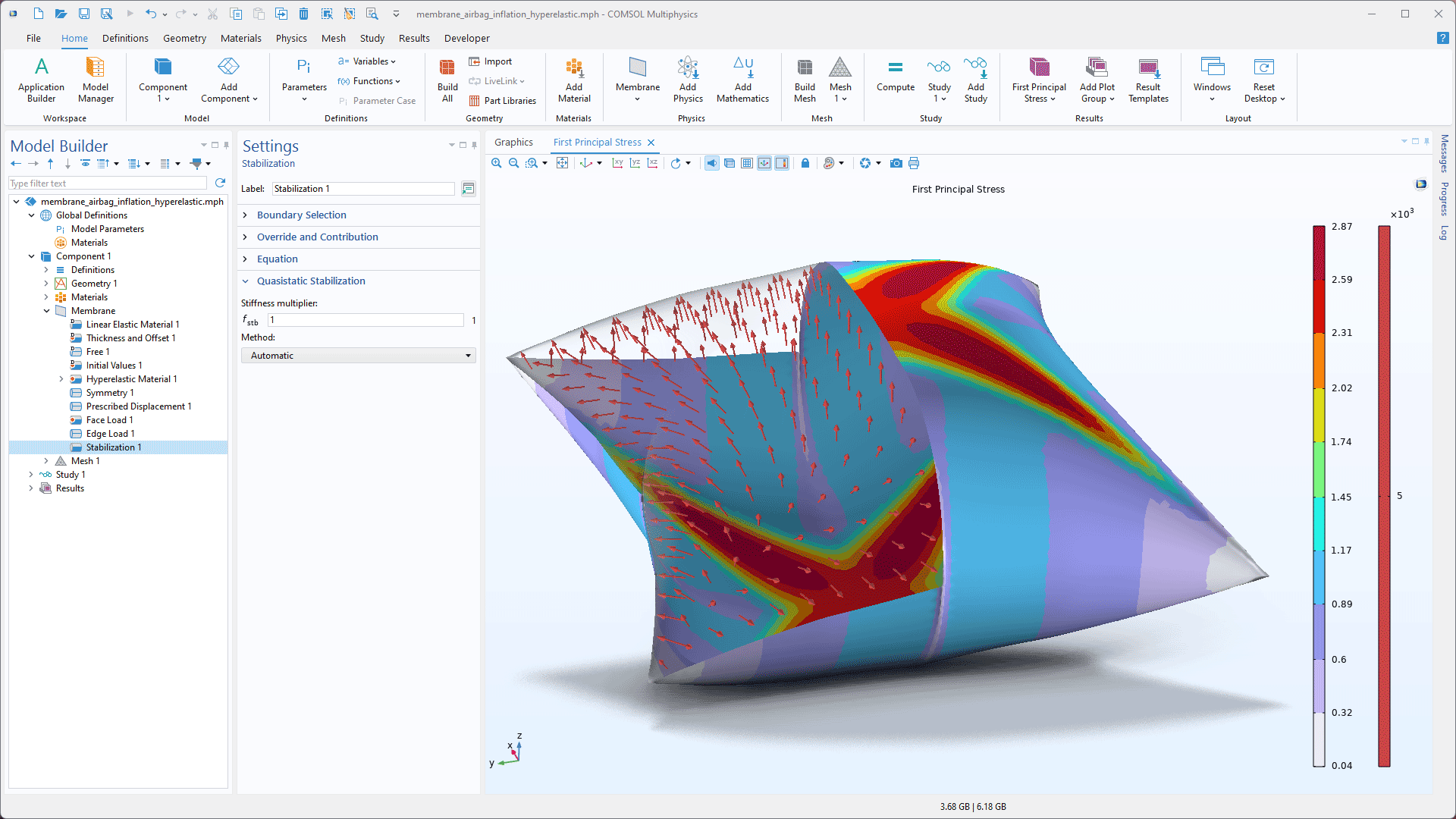
Componente aggiuntivo per compositi particellari casuali
Nel ramo COMSOL Multiphysics di Add-in Libraries è stato aggiunto un nuovo componente aggiuntivo per generare parti di geometria per compositi di particelle casuali. Il componente aggiuntivo può essere utilizzato per creare particelle sferiche all'interno di un blocco rettangolare, le cui posizioni e dimensioni sono fisse o distribuite casualmente in base a diverse distribuzioni di probabilità.
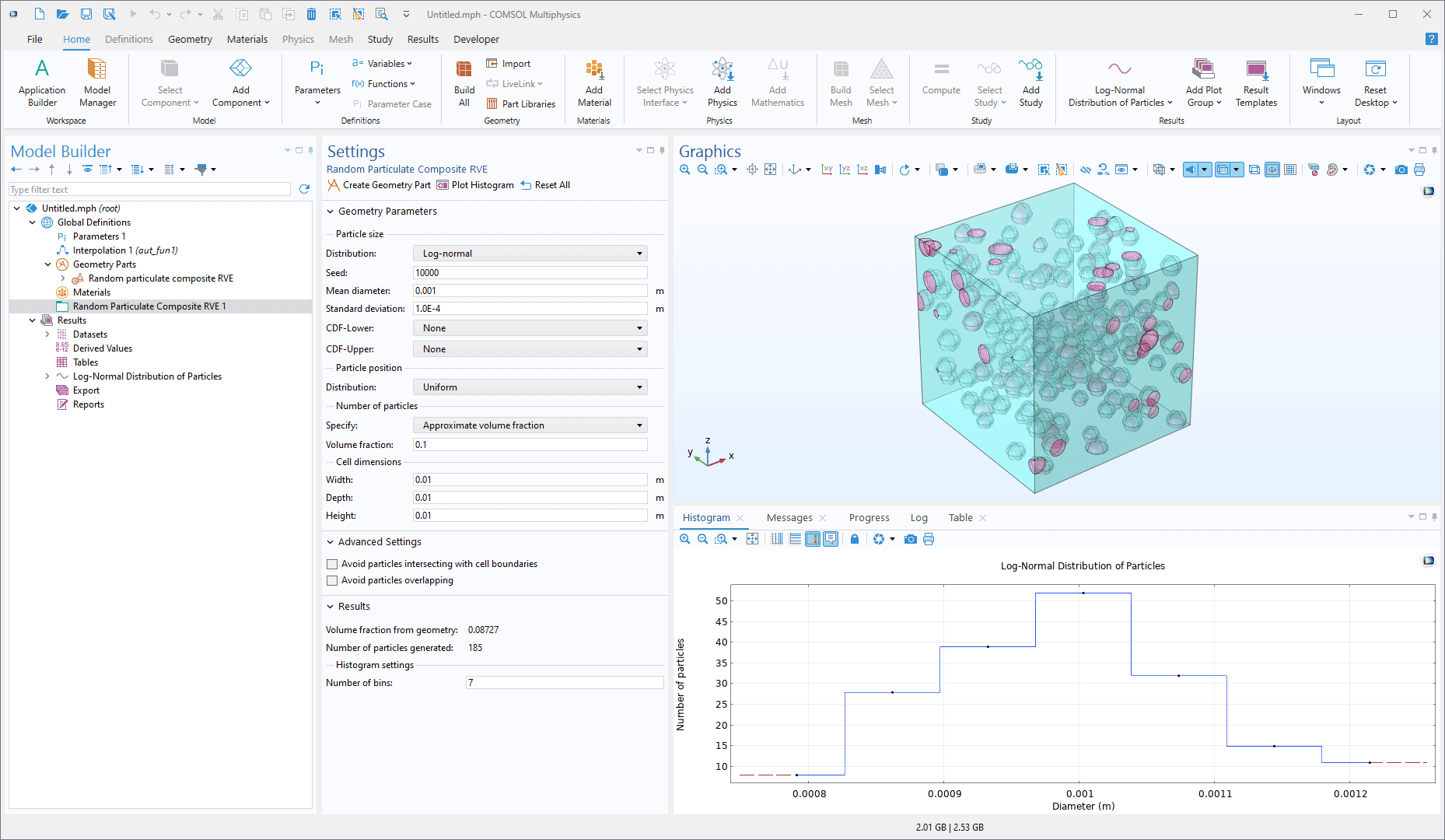
Cartella della libreria dei materiali compositi
La nuova cartella integrata per Composites è suddivisa in tre gruppi di materiali: costituenti delle fibre, costituenti della matrice e lamine. Questa caratteristica facilita la creazione di modelli con i tipi più comuni di strati di composito. È possibile vedere questi nuovi materiali utilizzati nei seguenti tutorial:
- composite_cylinder_micromechanics_and_stress_analysis
- composite_multiscale
- composite_wheel_rim
- ply_drop_off_in_a_composite_panel
- layered_shell_structure_connection
- stacking_sequence_optimization
- progressive_delamination_in_a_laminated_shell
- homogenization_of_periodic_microstructures
Nuovi tutorial
La versione 6.3 di COMSOL Multiphysics® introduce diversi nuovi tutorial nello Structural Mechanics Module.
Response Spectrum Generator
Phononic Crystal
Postbuckling Analysis of an Aircraft Fuselage
Spot-Weld Connection in a Double Hat Beam
Micromechanical Model of an Octet-Truss Lattice Cell
micromechanical_model_of_an_octet_truss_lattice_cell
Download da Application Gallery
Piezomagnetic Cell Rover*
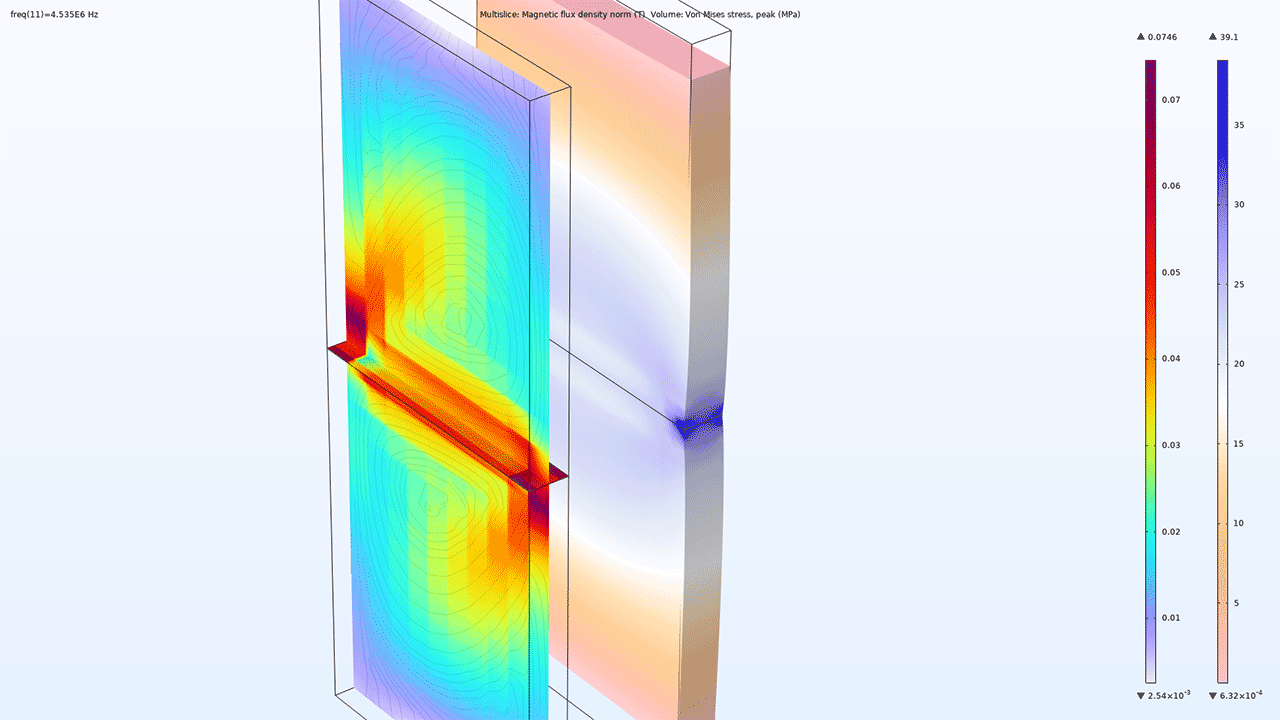
Titolo in Application Library:
piezomagnetic_cell_rover
Download da Application Gallery
*Richiede AC/DC Module

